WCS NEWS RELEASE
Urgent Message from WCS as the Avian Influenza Virus Threatens Wildlife Across the Globe
Massive Die-Off of Elephant Seals in Argentina Due to Avian Influenza Is Latest Sign that the Virus Is an Existential Threat to Wildlife
NEW YORK , NY | JANUARY 15, 2024
New York, January 15, 2024 – The Wildlife Conservation Society is issuing the following statement about H5N1 Avian Influenza due to ongoing wildlife die-offs across the world:
Said Dr. Chris Walzer, WCS Executive Director of Health:
“With the frightening die-off of animals across the globe due to avian influenza, WCS is calling for governments internationally to treat this growing crisis with the urgency it demands. As we continue to monitor the death of innumerable species and track the movement of highly pathogenic avian influenza (HPAI) into mammal populations, we must strengthen the focus on integrating the surveillance of emerging influenza clades in wild birds and mammals to support critical vaccine libraries.
“H5N1 now presents an existential threat to the world’s biodiversity. It has infected over 150 wild and domestic avian species around the globe as well as a dozens of mammalian species. The bird flu outbreak is the worst globally and also in U.S. history, with hundreds-of-million birds dead since it first turned up in domestic waterfowl in China in 1996. Bird flu is highly transmissible, spread through droplet and feces-borne infections, and exacerbated by climate-change-altering migration schedules for birds and its repeated re-circulation in domestic poultry.
“Globally, HPAI H5N1 has now infected many mammals—including foxes, pumas, skunks, and both black and brown bears in North America. Some 700 endangered Caspian seals died from HPAI near Dagestan in 2023. Additionally, outbreaks in mink farms in Spain and Finland that serve as potential mixing vessels for reassortment have also been documented. HPAI H5N1 has arrived in Latin America with devastating consequences, afflicting multiple countries that include WCS land- and seascapes in Peru, Chile, Uruguay, Ecuador, and Argentina.
“More than 95 percent of the Southern elephant seal (Mirounga leonina) pups born along 300 km of the Patagonia coastline died at the end of 2023. It’s the first report of massive elephant seal mortality in the area from any cause in the last half century. The sight of elephant seals found dead or dying along the breeding beaches can only be described as apocalyptic. This 2023 die-off contrasts starkly with the 18,000 pups born and successfully weaned in 2022.
“As the virus continues to spread through mammal populations, the World Health Organization (WHO) has called on public health officials to prepare for a potential spillover of H5N1 to people. The "R naught" value—or the number of people infected by a single infected person—for COVID initially ranged from 1.5 to 7. For H5N1 among birds, it is around 100. It is imperative that we take a collaborative One Health approach to identifying emerging strains of bird flu across the globe to support the development of specific and universal vaccines that can quickly treat infection in people to prevent another pandemic.
“The cost of inaction is already causing major devastation to wildlife. As we work to help affected populations recover, we must remain vigilant against the spread of this deadly pathogen to people before it’s too late.”
https://newsroom.wcs.org/News-Releas...DI5NS42MC4wLjA.
Urgent Message from WCS as the Avian Influenza Virus Threatens Wildlife Across the Globe
Massive Die-Off of Elephant Seals in Argentina Due to Avian Influenza Is Latest Sign that the Virus Is an Existential Threat to Wildlife
NEW YORK , NY | JANUARY 15, 2024
New York, January 15, 2024 – The Wildlife Conservation Society is issuing the following statement about H5N1 Avian Influenza due to ongoing wildlife die-offs across the world:
Said Dr. Chris Walzer, WCS Executive Director of Health:
“With the frightening die-off of animals across the globe due to avian influenza, WCS is calling for governments internationally to treat this growing crisis with the urgency it demands. As we continue to monitor the death of innumerable species and track the movement of highly pathogenic avian influenza (HPAI) into mammal populations, we must strengthen the focus on integrating the surveillance of emerging influenza clades in wild birds and mammals to support critical vaccine libraries.
“H5N1 now presents an existential threat to the world’s biodiversity. It has infected over 150 wild and domestic avian species around the globe as well as a dozens of mammalian species. The bird flu outbreak is the worst globally and also in U.S. history, with hundreds-of-million birds dead since it first turned up in domestic waterfowl in China in 1996. Bird flu is highly transmissible, spread through droplet and feces-borne infections, and exacerbated by climate-change-altering migration schedules for birds and its repeated re-circulation in domestic poultry.
“Globally, HPAI H5N1 has now infected many mammals—including foxes, pumas, skunks, and both black and brown bears in North America. Some 700 endangered Caspian seals died from HPAI near Dagestan in 2023. Additionally, outbreaks in mink farms in Spain and Finland that serve as potential mixing vessels for reassortment have also been documented. HPAI H5N1 has arrived in Latin America with devastating consequences, afflicting multiple countries that include WCS land- and seascapes in Peru, Chile, Uruguay, Ecuador, and Argentina.
“More than 95 percent of the Southern elephant seal (Mirounga leonina) pups born along 300 km of the Patagonia coastline died at the end of 2023. It’s the first report of massive elephant seal mortality in the area from any cause in the last half century. The sight of elephant seals found dead or dying along the breeding beaches can only be described as apocalyptic. This 2023 die-off contrasts starkly with the 18,000 pups born and successfully weaned in 2022.
“As the virus continues to spread through mammal populations, the World Health Organization (WHO) has called on public health officials to prepare for a potential spillover of H5N1 to people. The "R naught" value—or the number of people infected by a single infected person—for COVID initially ranged from 1.5 to 7. For H5N1 among birds, it is around 100. It is imperative that we take a collaborative One Health approach to identifying emerging strains of bird flu across the globe to support the development of specific and universal vaccines that can quickly treat infection in people to prevent another pandemic.
“The cost of inaction is already causing major devastation to wildlife. As we work to help affected populations recover, we must remain vigilant against the spread of this deadly pathogen to people before it’s too late.”
https://newsroom.wcs.org/News-Releas...DI5NS42MC4wLjA.
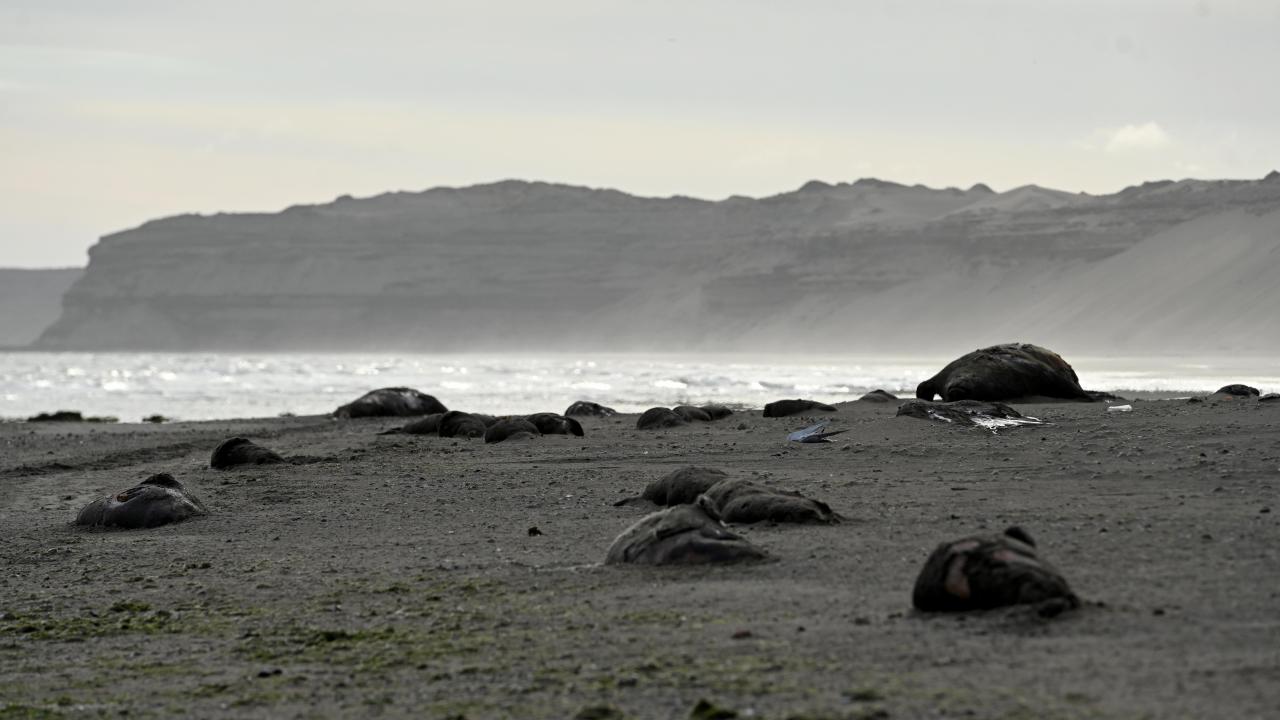 Elephant seals lie dead on a beach in Argentina following an outbreak of avian influenza in the region. (Maxi Jonas)
Elephant seals lie dead on a beach in Argentina following an outbreak of avian influenza in the region. (Maxi Jonas)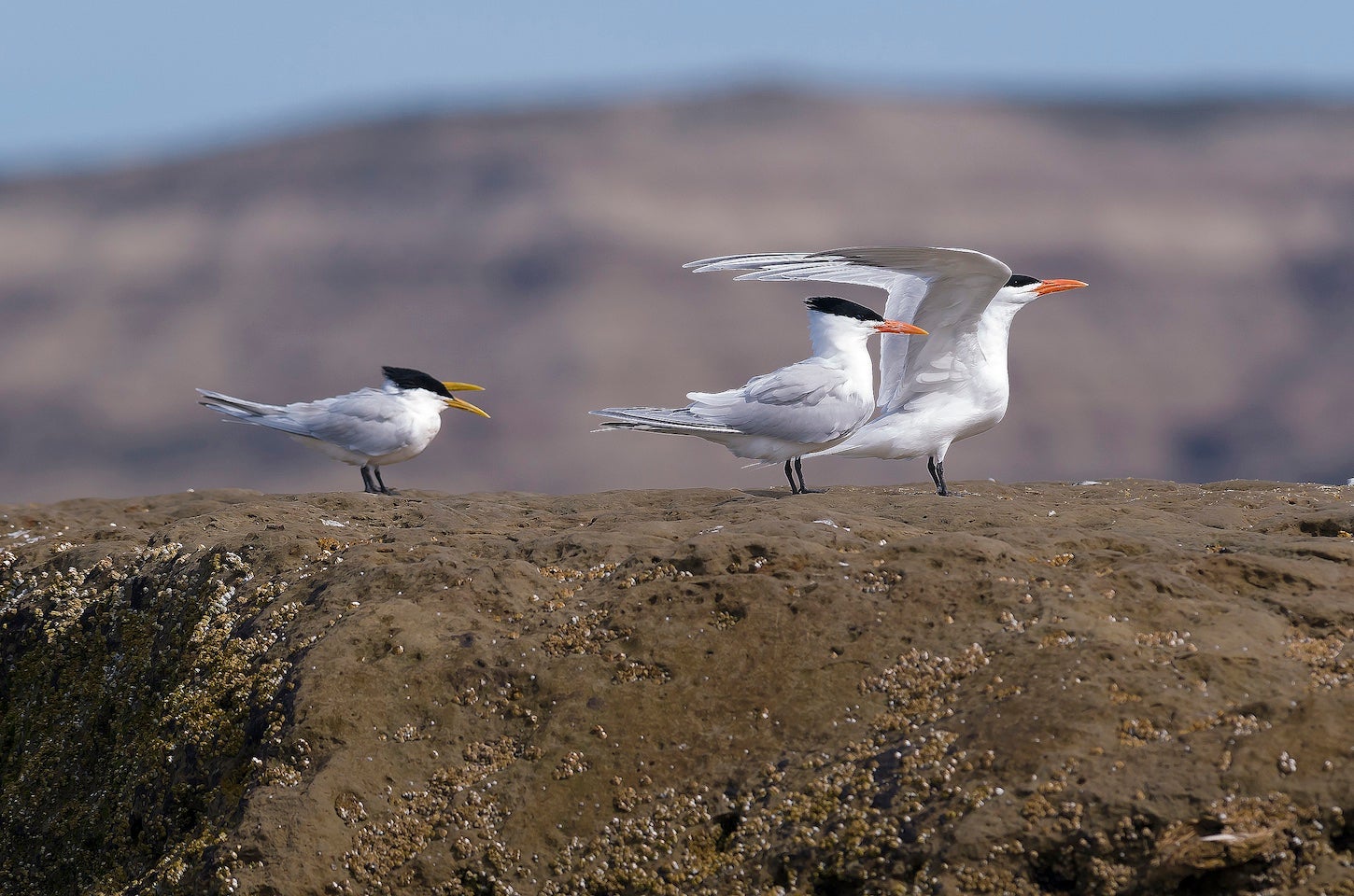 Terns are among the hundreds of thousands of birds recently impacted by avian influenza. (Getty)
Terns are among the hundreds of thousands of birds recently impacted by avian influenza. (Getty) 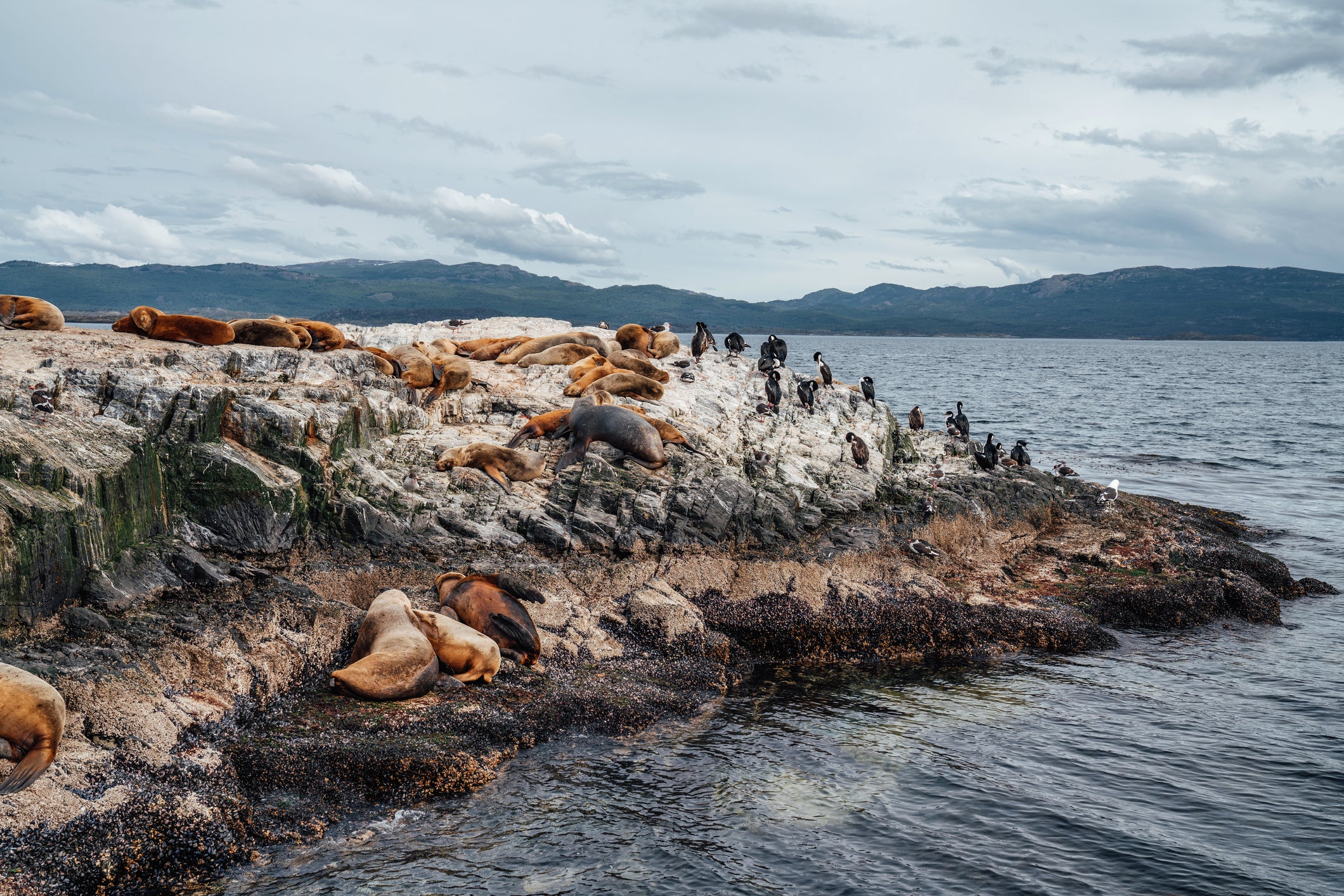 Sea lions nap alongside cormorants in Argentina. (Getty)
Sea lions nap alongside cormorants in Argentina. (Getty)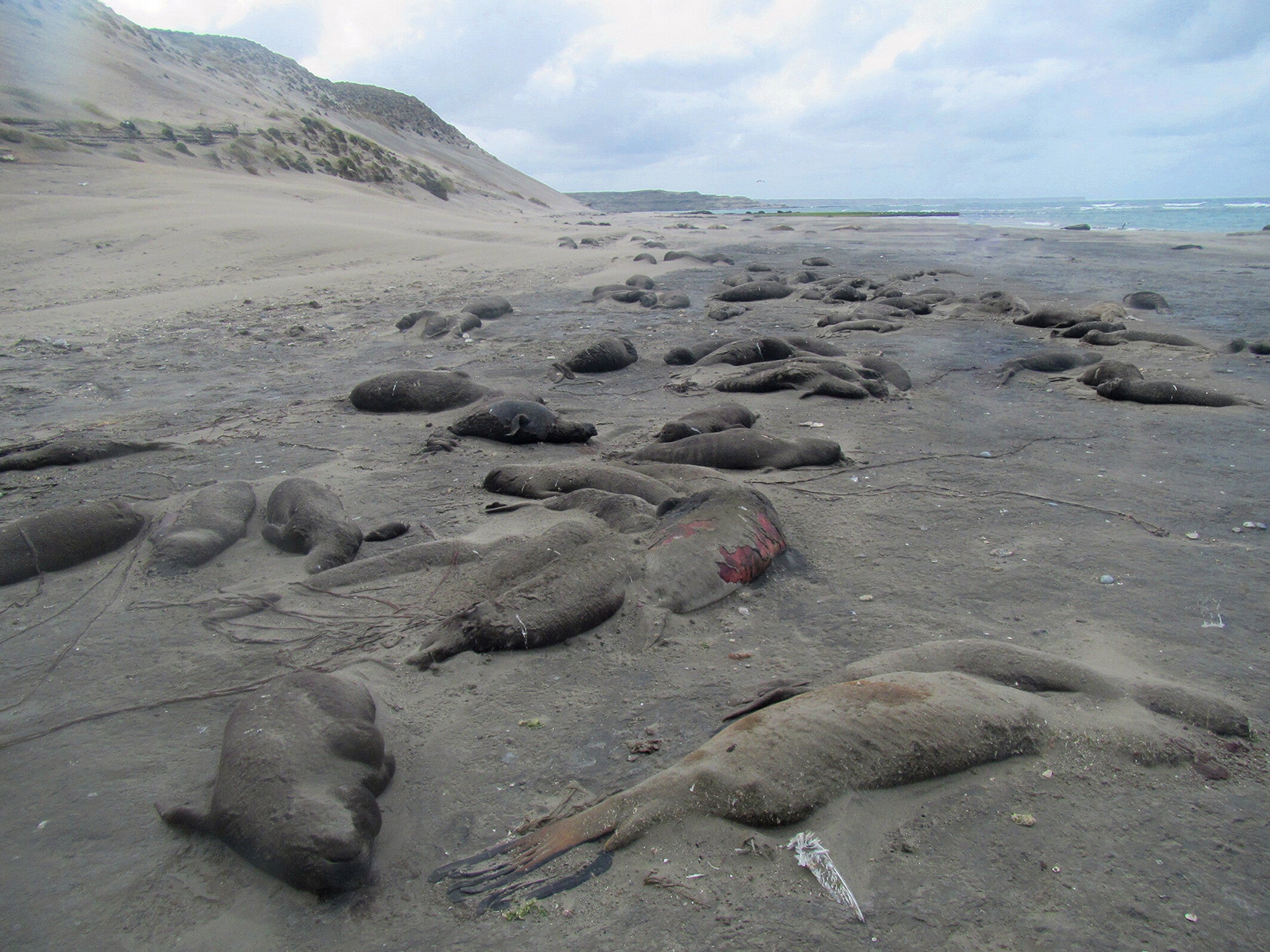 Dead elephant seals line a beach in Argentina in fall 2023. Avian influenza has caused the catastrophic die-off of thousands of elephant seals in Argentina, raising concerns for wildlife and cross-species transmission. (Ralph Vanstreels/UC Davis)
Dead elephant seals line a beach in Argentina in fall 2023. Avian influenza has caused the catastrophic die-off of thousands of elephant seals in Argentina, raising concerns for wildlife and cross-species transmission. (Ralph Vanstreels/UC Davis)






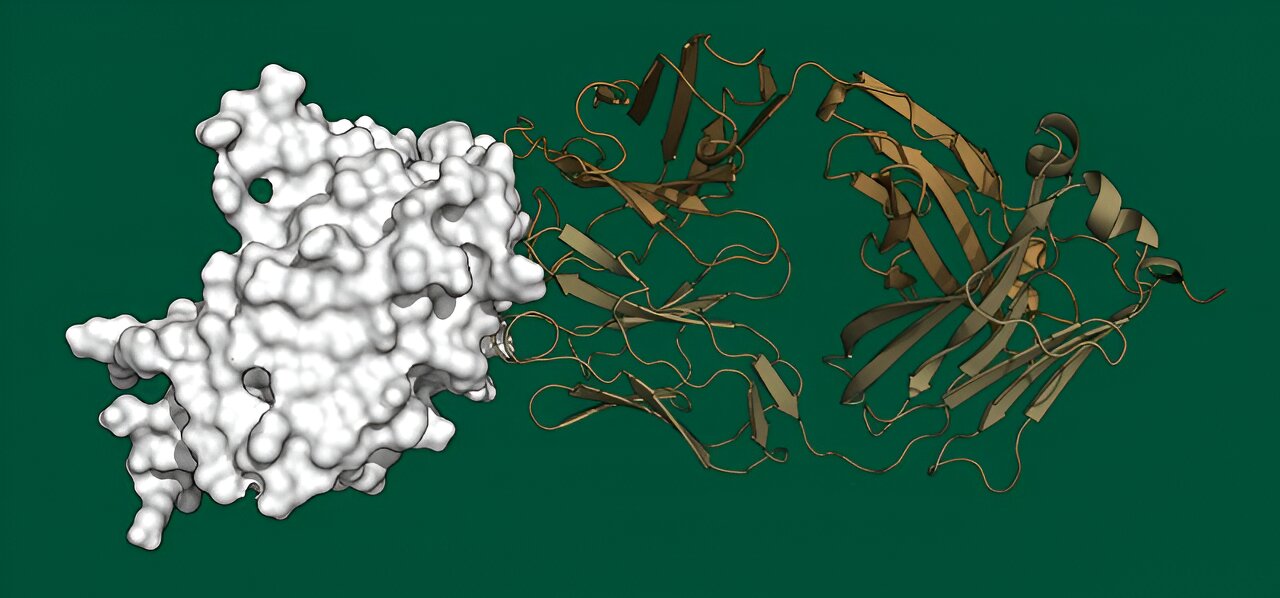

Comment